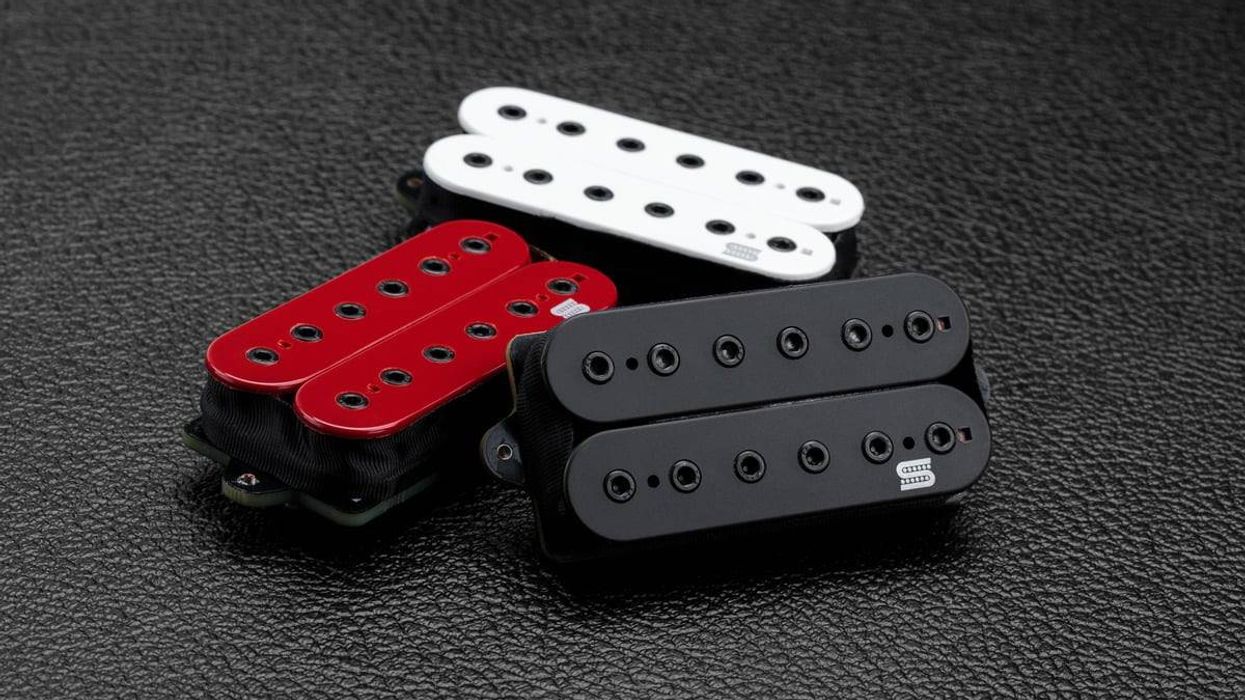RatingsPros:Expansive palette of voices. Great dynamic range. Impressive low-end resonance and sustain. Slinky playability. Tuning stable. Virtually indestructible. Cons: Snorkely midrange in standard tuning. Street: $2,500 street Blackbird Savoy blackbirdguitar.com | Tones: Playability: Build/Design: Value: |
Guitarists can be puzzlingly irregular adopters of forward-looking technology. Take electric guitarists and the Stratocaster. It’s hard to imagine an instrument more radical than the Stratocaster back in 1954. But while that fairly jarring innovation worked out just fine, players have been dragged kicking and screaming through hundreds of potentially important innovations since. Acoustic guitarists can be an even more puritanical lot—which is more understandable given the earthier associations with the instrument.
But that indivisible association between the acoustic guitar and all things “organic” is also the thing that makes me wonder if the little Blackbird Savoy travel guitar—and the flax-fiber-based Ekoa composite it’s built with—is an innovation that acoustic players will be able to get behind in a big way.
Fiber Rich
Blackbird developed and introduced Ekoa as a guitar building material back in 2013. It’s used to make the company’s ukuleles and full-sized El Capitan flattop. Up to that point, Blackbird had been among a handful of builders using carbon fiber. Carbon fiber’s virtues as a guitar material are well known. It sounds surprisingly great, is stable and impervious to temperature change, and is almost indestructible unless you decide to attack it with a sledgehammer or run it over with an 18-wheeler. But Blackbird’s founder, a designer named Joe Luttwak, was faced with the same problem that all the composite-building community faced—a traditionally minded potential customer base that balked at anything that didn’t look like wood, no matter how practical or great sounding it was.
That’s where Ekoa entered the picture. Ekoa is a mix of recycled bioresin and a cloth derived from flax—a robust grass-like plant that is, in some respects, the cockroach of the plant world: abundant, fast growing, and able to survive drought, lousy soil, and other conditions that would wither less sturdy species. Another virtue: when turned into composite cloth and put through a heating and pressurizing process, it turns into a super-strong, rigid material that looks—and can sound—a lot like wood.
The Savoy reveals much about Ekoa’s potential, just at a glance. The back, sides, and neck all look uncannily like mahogany. And only an up-close inspection reveals the differences in the “grain” that betray the source materials. The less dense top reveals more of Ekoa’s inherent grain characteristics and quirks. It’s lighter in color, and up close you see more of the fibrous strands of the flax. But it’s a very attractive material—full of intricacies that tease and please the eye, and inspire thoughts of other cool uses for the substance. (Among other things, I’d love to have a canoe, countertop, and a light plane made of this stuff!)
Ekoa, like any good composite, opens up a lot of design possibilities. The Savoy is light. But Ekoa’s malleability in a mold also enables player-centric features that you can’t achieve in conventional wood-based acoustic guitar design. The most obvious and notable of these is the deep cutaway, which reaches all the way to the bass side of the neck and enables—among other performance feats—full-step bends on the high-E string all the way up to the 19th fret and scalar runs between all strings spanning the 14th and 20th fret. This is an acoustic guitar that opens up playing possibilities that really aren’t possible on most acoustics—and they don’t even really feel like a stretch.
Other practical byproducts of Ekoa’s potential include a hollow neck that significantly enhances the guitar’s resonance, and tuning stability that is, predictably, superb.
Wooden-Tone Wonders
Sonically speaking, the Savoy is full of surprises. There’s lots of complexity and dimension. And you hear really unique tone blends depending on tuning and approach. At times, I heard the warm delicacy of small-bodied mahogany guitars, like a Guild M-20 or a Martin 00-17. At other times, the huskiness of a small bodied, ladder-braced Stella or Gibson came through. It can also achieve aural sleight of hand by sounding like a guitar many times its size. Strum it hard and the Blackbird is downright boisterous, with explosive transients and note definition that is very uncommon from a body this small.
Acoustic players that savor low-mid sweetness above all things may have a few quibbles. In standard tuning the 3rd and 4th strings, in particular, have a very mid-forward focus. And the midrange itself can have a nasal quality. The guitar’s character really changes when you give the strings a little more slack, however. Bass response and sustain, which are very apparent in standard tuning, are especially impressive in drop tunings. The midrange emphasis falls away substantially in these tunings, revealing more vividly the little Blackbird’s very impressive low-mid and bottom-end resonance.
The Savoy’s slinky playability is also remarkable. Deep bends, legato moves, slides, and twitchy finger vibrato all feel especially easy. And the neck and cutaway all invite exploratory fretwork.
The Verdict
The Savoy is not an alternative materials demonstration concept. It’s a great guitar with a unique personality that shines in fingerstyle folk, country blues, and African music, and punches above its weight class by holding up to the bold, heavy strumming rockers and country artists might throw its way.
Then there’s the copious design merits. You could probably wander the world, little Savoy in hand, without a case and never significantly damage the thing. Heck, you could probably make it the hobo’s stick from which you dangle the handkerchief holding the rest of your worldly possessions. Much is made of the digital nomad lifestyle these days—rootless travellers that make a living with little more than a laptop. The Savoy is the 6-string for those technology-obsessed vagabonds. And it’s an example of the practical, adventurous design-think that the guitar world is often missing—and really needs at a time when its most critical resources are at risk.





















